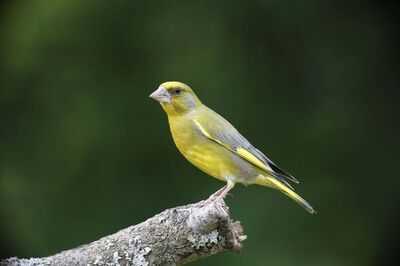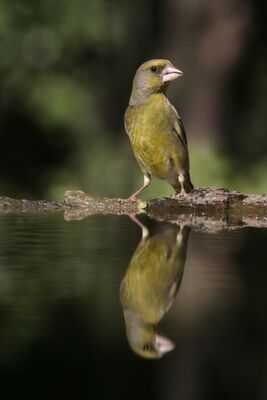
Greenfinches used to be common visitors to British gardens. But in the past few decades, their numbers have dropped sharply, with some people barely seeing them at all. They are slowly making a comeback, though, and gardeners can play a big part in helping them return.
These small birds love thick hedges, trees and bushes, but one of the easiest ways to attract them is with food. They have a varied diet, but there's one seed in particular that greenfinches absolutely love. And if you scatter it in the right place, you could be rewarded with a regular flock of bright yellow-green visitors.
That seed is the sunflower heart, and according to experts at Ark Wildlife, it's a firm favourite among greenfinches.
They explained: "Greenfinches primarily feed on seeds. In gardens, they often visit feeders for sunflower seeds and peanuts, which are rich in energy."
Sunflower hearts can be left in hanging feeders, on bird tables, or scattered on the ground in a safe spot. Greenfinches also enjoy black sunflower seeds and peanut granules.
They don't just eat seeds either. In the spring and summer, greenfinches feed insects to their chicks, including small caterpillars and aphids.
In autumn and winter, they may eat berries from shrubs like hawthorn, yew or rowan.
These birds tend to stay close to home and don't migrate far. They're often found in gardens, woodlands, orchards and parks, especially where there are plenty of shrubs and trees.
They are around 14cm long and are the largest yellow-green finches in Europe.
Males have a bright yellow-green chest, brownish-green back, and flashes of yellow on the wings. Females and young birds are duller in colour, with streaks of brown on their backs and less yellow in their feathers.
Greenfinches build their nests in hedges, bushes and small trees, often close to the trunk.
The female lays four to six eggs and incubates them for up to two weeks. Both parents help feed the chicks, which leave the nest after around 14 days.

To help greenfinches breed and feed safely, it's important to keep feeding areas clean. Experts at Ark Wildlife say the recent decline in numbers is partly due to a disease called trichomonosis, which can spread quickly between birds.
They added: "It's important hygiene is maintained around bird feeding stations."
Greenfinches are currently on the UK's red list for conservation, meaning they are at risk. Numbers fell by around 67% between 2008 and 2018, making it more important than ever to support them.
If you want to encourage greenfinches into your garden, experts say the best way is to offer a mix of food and shelter.
Adding shrubs, trees, berry-producing plants and sunflower hearts can turn any green space into a haven for these beautiful birds.
You may also like

AP, Odisha brace for Cyclone Montha

Delhi acid attack survivor demands justice, culprits behind bars

"There are many dead, fake voters; voter lists must be prepared correctly": Bengal LoP Suvendu Adhikari on SIR

"Govt has prepared extensively": Odisha Minister assure full readiness as Cyclone Montha nears coast

Massive fire breaks out at scrap warehouse in Gwalior, no casualties reported






